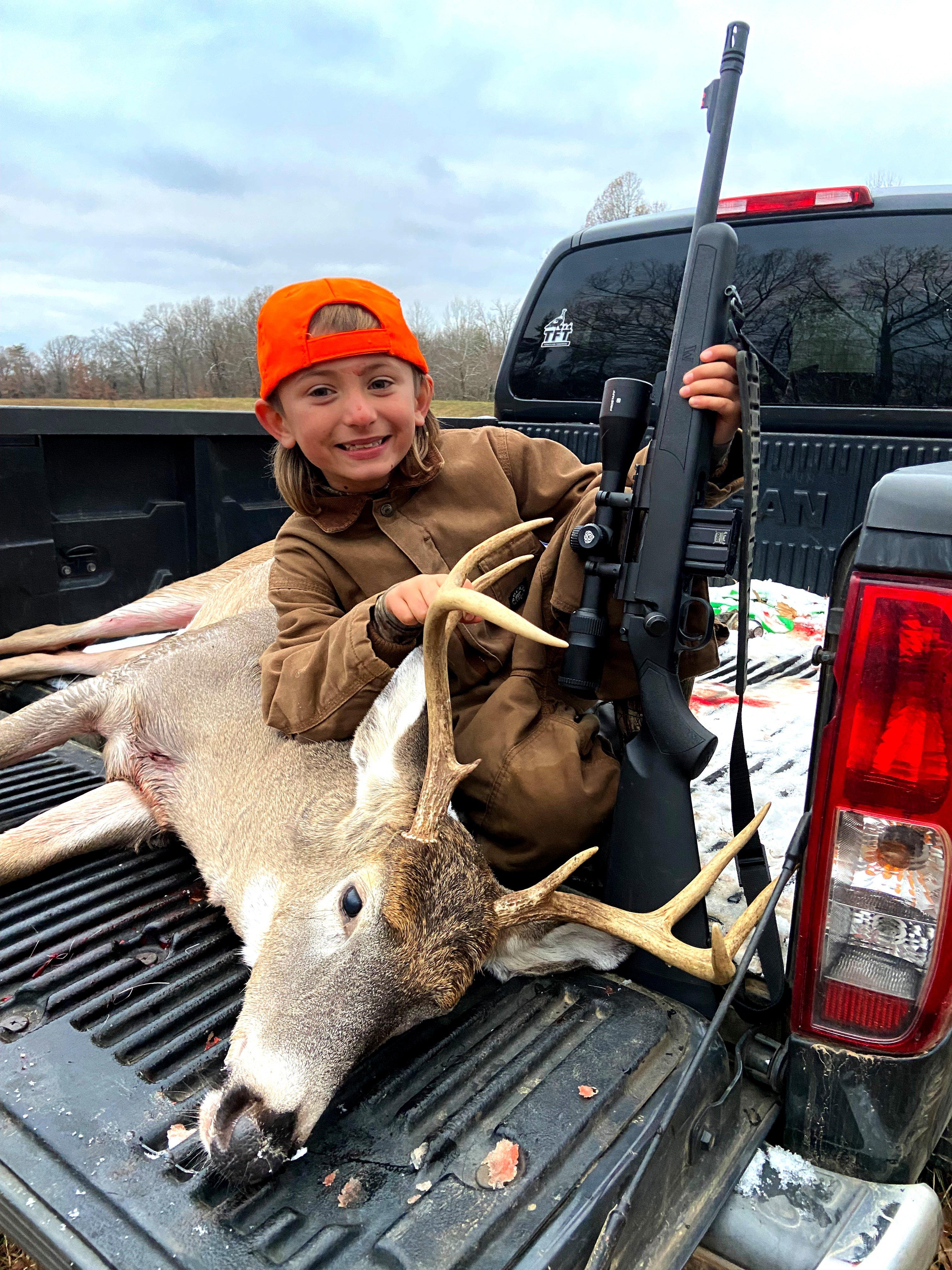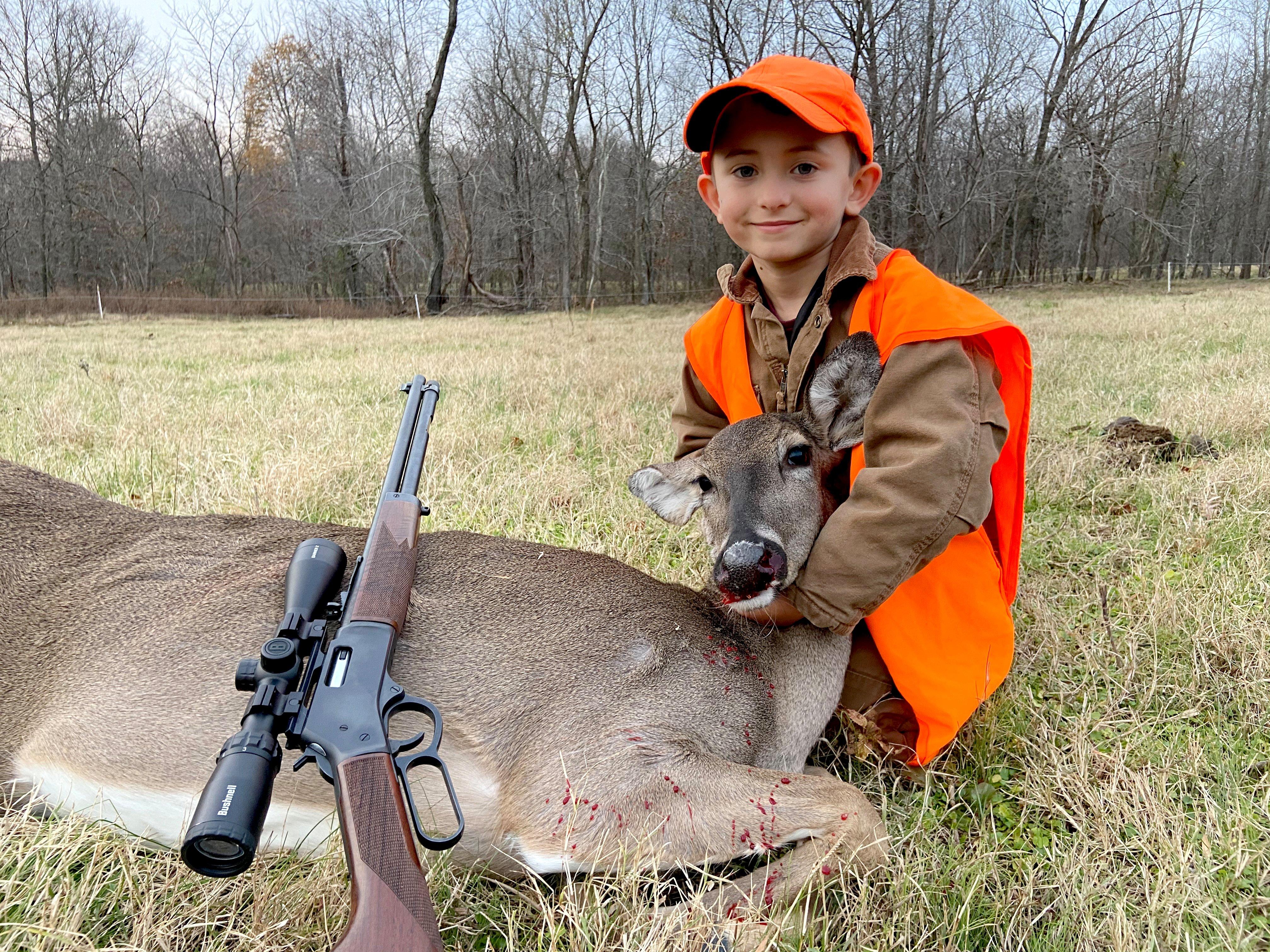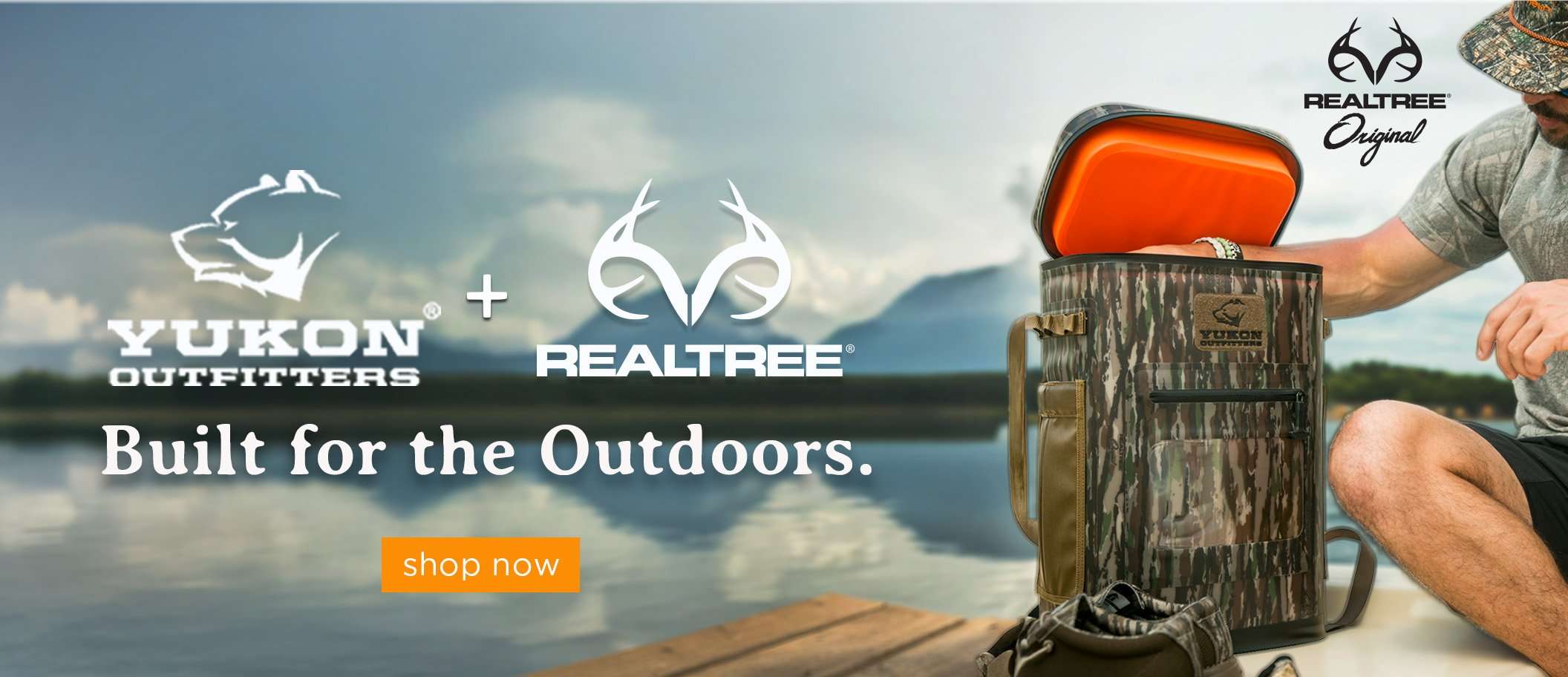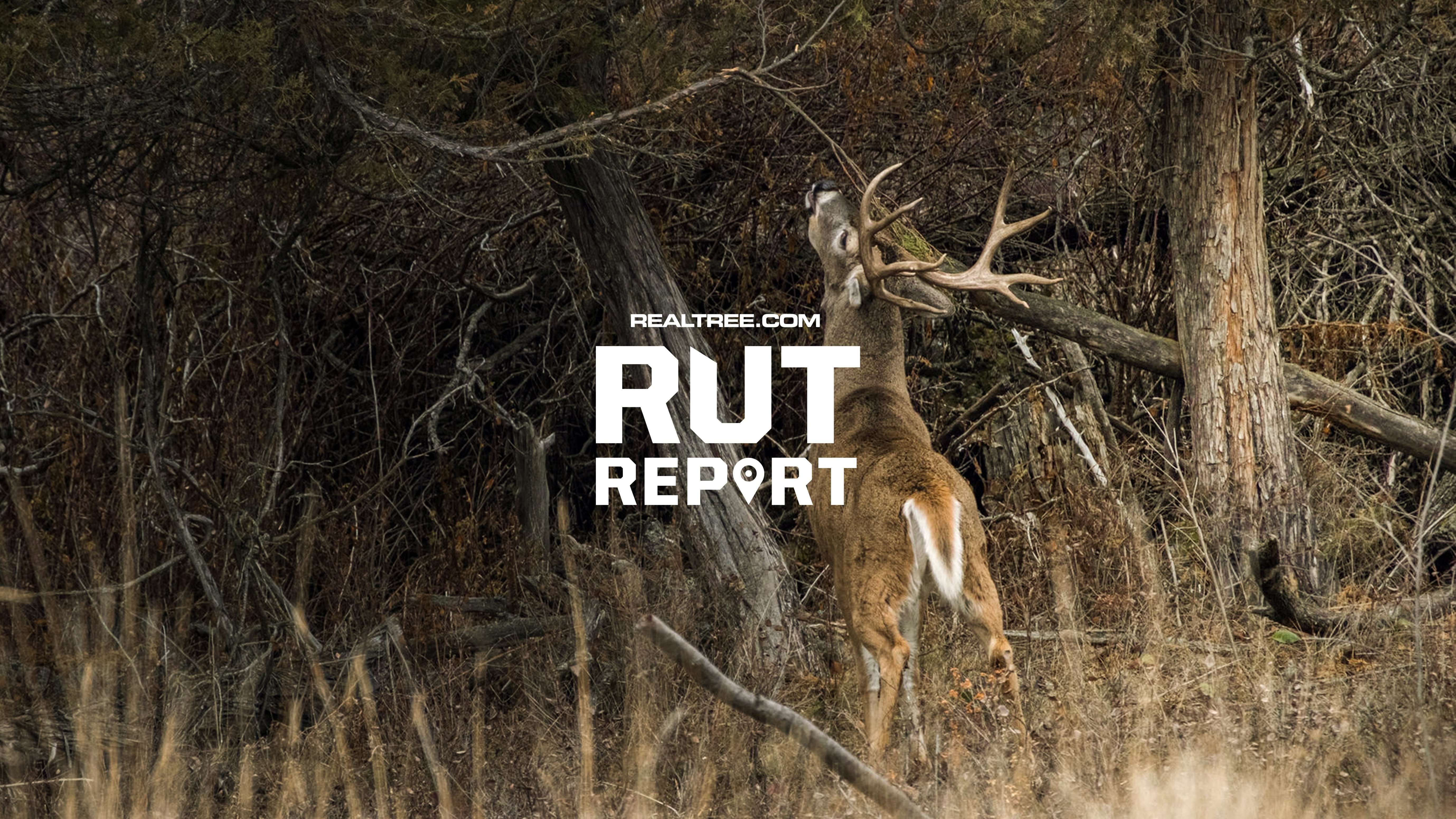This is not another roundup of .223s and 6.5 Creedmoors. These setups actually have low recoil and do a great job on whitetails

New deer hunters can be successful and gain confidence with a number of light-recoiling cartridges. Image by Will Brantley
Many experienced shooters and longtime hunters describe the 6.5 Creedmoor as having mild recoil. I agree. I grew up hunting with a .30-06, which, when loaded with 180-grain bullets in the average bolt-action deer rifle, kicks about twice as hard as the Creed. But when my son, Anse, was younger and just learning the deer-hunting ropes, he wasn’t buying it. He’d shot his mama’s deer gun chambered in 6.5 Creed, and he didn’t like it one but. Though he never had a bad recoil experience — never been scoped or anything like that — Anse was like most little children in that he didn’t care to shoot anything that kicks.
So what “kicked,” according to him? His benchmark in those days was a CVA Scout .410 that he used for squirrels and turkeys. His gun was scoped out and heavy enough to absorb recoil, and it has a good pad. He practiced with ½-ounce, 2 ½-inch loads, which probably produce about 4 pounds of recoil energy (about like a .223). He knew the 3-inch hunting loads kick more (maybe 6 or 7 pounds) and was OK with that in the field, but didn’t care to shoot them on the range.
Our practice sessions with potential deer guns had to be delicate. Anytime we sat down on the range to practice, even with guns he’d shot plenty of times, Anse would always ask, “Does this kick more than my .410?”
I always gave him a straight answer because I wanted him to trust me when he was ready to graduate to something more powerful. In the meantime, I tried to find rifles that really didn’t kick any more (or as much) than his .410 but that are capable deer rounds. I have several .223s, and I’ve shot some whitetails with them. What that taught me is that at ranges within 100 yards, which is as far as I’d let Anse shoot, I’d rather him be using a big bullet, even if it’s moving much slower. Those will break bone, punch two holes through even a big buck, and put him down fast. Here are my four favorites.
.300 Blackout
Anse’s go-to deer rifle when he was younger was a Mossberg MVP Patrol chambered in .300 Blackout (BLK). The gun is short and handy, and it has a good trigger. Range ammunition is easy to find, including subsonic stuff, which has even lower recoil (though it doesn’t hit to zero). Good hunting bullets are a little more difficult to find, but they’re out there. The best we’ve tried has been the Barnes 110-grain TAC-TX, which is an all-copper bullet with a polymer tip. Anse used that on a number of whitetails and pigs, including a giant Texas boar this past spring. The .300 BLK generates about 5 pounds of recoil energy, and is easily suppressed.
Don’t Miss: Why the .300 Blackout is a Great Deer Round

Anse Brantley poses with a big doe he downed with a low-recoil lever gun. Image by Will Brantley
.357 Magnum
Anse shot his first two whitetails, including a big 10-pointer, with my Henry Big Boy lever-action .357 Magnum rifle loaded with Federal Premium 180-grain HammerDown bullets. The classic revolver cartridge is a powerhouse from a carbine, and underrated as a close-range hunting tool. I used the same setup a few years ago on a big pronghorn buck in Colorado. I drilled him through both shoulders at 91 yards, dropping him in his tracks.
On paper, a .357 Magnum rifle kicks about the same as the .300 BLK, but I think felt recoil is actually a bit less. New shooters can practice with light .38 Special ammunition, too, which is inexpensive and doesn’t kick much more than a .22.
Don’t Miss: The Lever-Action Rifle Revival
.350 Legend
I’ve been a fan of this straight-wall Winchester cartridge since it hit the market a few years ago, and have used it to take several whitetails. Unlike the previous two cartridges, the Legend was designed from the ground up for deer hunting, and it’s available in several rifles. In addition, it’s factory loaded with several good bullets, such as the Winchester 150-grain Deer Season XP and Federal Non-Typical 180-grain soft point. The .350 Legend generates about 9 pounds of recoil energy, which is more than the .357 Magnum, but still less than the 6.5 Creedmoor. In fact, the Legend recoils even less than the .243 Winchester, which is arguably the classic whitetail caliber of choice for recoil-sensitive shooters. I’ve shot a lot of deer with a .243, and within 150 yards, the .350 Legend is the better deer killer.
.50-Caliber Muzzleloader (Downloaded)
My first gun was a muzzleloader that I got when I was 9 years old, and I had a blast — pun intended — learning to load and shoot it with 50-grain charges of black powder and patched round balls. Muzzleloader seasons provide extra opportunity, and Anse has killed does the past two seasons with an inline rifle loaded with 60 grains of loose Triple 7 powder behind a 245-grain CVA Powerbelt copper hollowpoint bullet. Though I haven’t chronographed it, I’d guess the velocity to be around 900 to 1,000 fps, but that bullet expands well at low velocity. We keep our shots within 50 yards, where it does just fine. Recoil is perhaps the mildest of this lineup, and Anse gets a kick out of the ramrods and smoke on the range.
Don’t Miss: All About Federal FireStick Muzzleloaders
Since I originally wrote this several years ago, Anse has grown, both in physical size and in hunting experience. He routinely carries an over / under 20-gauge to the turkey woods and duck blind, and has no problem handling 3-inch magnum loads. In the deer woods, a 6.5 Creedmoor is now his go-to, and his effective range is longer because of it. I firmly believe that early foundation of good experiences that we built with those light-kicking deer guns paved the way for the success he continues to enjoy today. And sometimes, we still reach for those rifles. They’re still fun to shoot — and as even a little kid can prove, they can be deadly effective in the woods.












